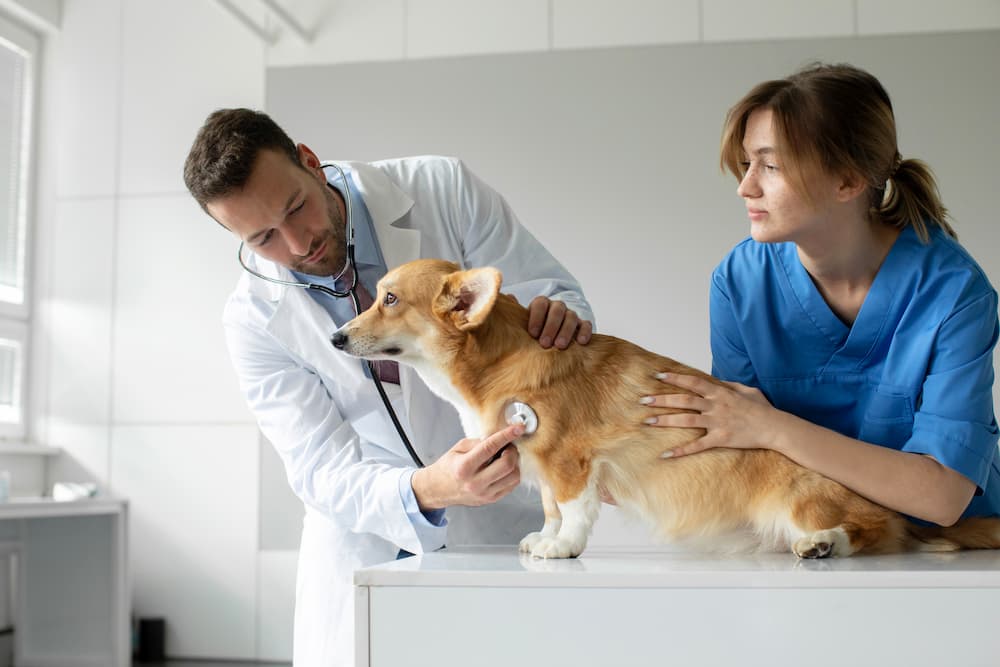
Two Paths, One Passion: How Veterinary Assistants and Veterinary Technicians Compare
Veterinary assistants and veterinary technicians who are passionate about helping animals often find fulfillment and purpose in their careers. Whether you’re exploring a future in veterinary assisting or aiming for a more advanced clinical role, both paths provide meaningful opportunities in the veterinary field.
Let’s dive into how vet assistants and vet techs compare—and how to choose the path that’s right for you.
Education: Two Distinct Career Pathways
Though sometimes confused, veterinary assistants and veterinary technicians are not the same. These titles refer to different positions, responsibilities, and levels of required education within a veterinary clinic or animal hospital.
Becoming a veterinary assistant usually requires only a high school diploma or GED. Many students begin their journey through an approved veterinary assistant program, like the one offered at Animal Behavior College. This role is an excellent entry point into the veterinary field, offering exposure to both patient care and clinic operations.
In contrast, veterinary technicians must complete a veterinary technology program, often earning an associate degree. A registered veterinary technician must also pass the VTNE and meet state licensing requirements. Some go on to become a veterinary technician specialist, focusing on areas such as veterinary dentistry, anesthesia, or emergency care.
If you’re considering this route, expect a commitment to two or more years of formal veterinary technician education.
Responsibilities: What Do Vet Assistants and Vet Techs Do?
Veterinary Assistant Duties
Veterinary assistants are the hands-on support team in any veterinary hospital. Their tasks include:
- Cleaning exam rooms and kennels
- Assisting with restraining animal patients during exams
- Feeding and exercising pets
- Preparing surgical areas
- Managing front-desk responsibilities
- Supporting the medical team with basic care
They work under the supervision of licensed veterinarians and vet techs, contributing directly to animal patient wellbeing.
Veterinary Technician Duties
Vet techs take on more advanced clinical responsibilities, such as:
- Collecting blood and lab samples
- Administering medications and vaccines
- Assisting in surgery and monitoring anesthesia
- Performing X-rays and lab tests
- Supporting veterinary dentistry procedures
Some veterinary technicians choose to specialize in fields like internal medicine, behavior, or emergency care, often working in tandem with a veterinary technologist or program director at larger facilities or academic institutions.
Career Insights: Why Start as a Veterinary Assistant?
Starting as a veterinary assistant is a smart way to break into the industry without a lengthy degree program. Working in a veterinary clinic or animal hospital gives you first-hand experience and insight into the challenges and rewards of the job.
You’ll build emotional resilience and professional skills—especially when supporting difficult situations like pet loss or critical illness. If you eventually pursue a veterinary technology program, your background as a vet assistant will give you a competitive edge.
Job Prospects and Salary Expectations
There’s solid job growth projected for both roles. For vet assistants, the demand is driven by an expanding pet care industry and a shortage of skilled workers across animal hospitals, labs, and clinics.
As for veterinary assistant salary, pay varies by region and experience, but entry-level positions often start around $29,000 per year, with potential increases for certified assistants. For vet techs, higher education and specialization often bring higher salaries.
Roles for laboratory animal caretakers and other support staff are also growing, particularly in research facilities, where attention to detail and compassion for animal patients are essential.
Want to Know More?
If you’re wondering how to get started or have questions about training, check out our Veterinary Assistant FAQ. You’ll learn about career paths, certifications, externship opportunities, and how to find work after completing an approved veterinary assistant program.
Animal Behavior College’s training is backed by industry expertise and designed to prepare students for real-world animal care settings. Our program even meets guidelines recognized by professional organizations like the National Association of Veterinary Technicians in America (NAVTA).
Start Your Career in Veterinary Assisting Today
Whether you envision yourself working alongside a licensed veterinarian, supporting a surgical team, or helping clients at a busy veterinary hospital, the journey starts with education and passion.
Take the first step by contacting Animal Behavior College today at 800-795-3294. Our expert advisors can walk you through enrollment, externships, and the path to becoming a certified medical assistant for animals.
